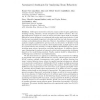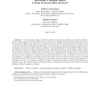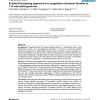2100 search results - page 412 / 420 » Fundamentals of the problem |
AAMAS
2004
Springer
13 years 7 months ago
2004
Springer
Multi-agent teamwork is critical in a large number of agent applications, including training, education, virtual enterprises and collective robotics. The complex interactions of ag...
AR
2004
13 years 7 months ago
2004
-- An inevitable collision state for a robotic system can be defined as a state for which, no matter what the future trajectory followed by the system is, a collision with an obsta...
BMCBI
2004
13 years 7 months ago
2004
Background: Hidden Markov Models (HMMs) have proven very useful in computational biology for such applications as sequence pattern matching, gene-finding, and structure prediction...
BMCBI
2004
13 years 7 months ago
2004
Background: Grouping proteins into sequence-based clusters is a fundamental step in many bioinformatic analyses (e.g., homology-based prediction of structure or function). Standar...
BMCBI
2004
13 years 7 months ago
2004
Background: Identifying protein-protein interactions is fundamental for understanding the molecular machinery of the cell. Proteome-wide studies of protein-protein interactions ar...



